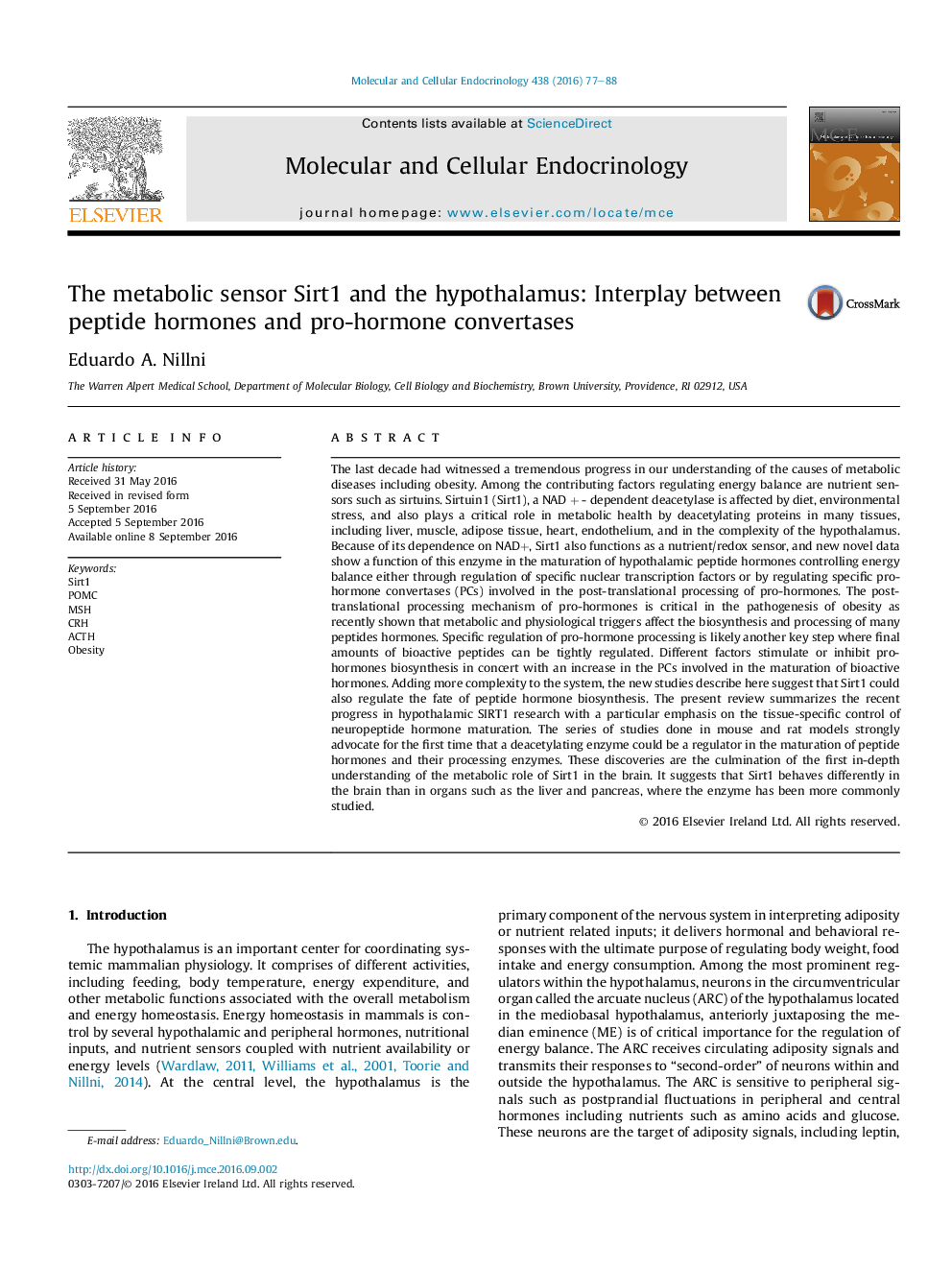| کد مقاله | کد نشریه | سال انتشار | مقاله انگلیسی | نسخه تمام متن |
|---|---|---|---|---|
| 5534255 | 1550841 | 2016 | 12 صفحه PDF | دانلود رایگان |

- Sirtuin1 (Sirt1), a NADÂ +Â - dependent deacetylase is affected by diet and environmental stress.
- Hypothalamic Sirt1 is a nutrient sensor regulating POMC, AgRP and CRH.
- Regulation of POMC by Sirt1 is nutrition and diet-induced obesity stress dependent.
- Sirt1 in the ARC induces positive energy balance by affecting POMC and CPE gene through FoxO1.
- Sirt1 affects proCRH processing either through FoxO1 to preproPC2/proPC2 or directly through preproPC2/proPC2.
The last decade had witnessed a tremendous progress in our understanding of the causes of metabolic diseases including obesity. Among the contributing factors regulating energy balance are nutrient sensors such as sirtuins. Sirtuin1 (Sirt1), a NADÂ +Â - dependent deacetylase is affected by diet, environmental stress, and also plays a critical role in metabolic health by deacetylating proteins in many tissues, including liver, muscle, adipose tissue, heart, endothelium, and in the complexity of the hypothalamus. Because of its dependence on NAD+, Sirt1 also functions as a nutrient/redox sensor, and new novel data show a function of this enzyme in the maturation of hypothalamic peptide hormones controlling energy balance either through regulation of specific nuclear transcription factors or by regulating specific pro-hormone convertases (PCs) involved in the post-translational processing of pro-hormones. The post-translational processing mechanism of pro-hormones is critical in the pathogenesis of obesity as recently shown that metabolic and physiological triggers affect the biosynthesis and processing of many peptides hormones. Specific regulation of pro-hormone processing is likely another key step where final amounts of bioactive peptides can be tightly regulated. Different factors stimulate or inhibit pro-hormones biosynthesis in concert with an increase in the PCs involved in the maturation of bioactive hormones. Adding more complexity to the system, the new studies describe here suggest that Sirt1 could also regulate the fate of peptide hormone biosynthesis. The present review summarizes the recent progress in hypothalamic SIRT1 research with a particular emphasis on the tissue-specific control of neuropeptide hormone maturation. The series of studies done in mouse and rat models strongly advocate for the first time that a deacetylating enzyme could be a regulator in the maturation of peptide hormones and their processing enzymes. These discoveries are the culmination of the first in-depth understanding of the metabolic role of Sirt1 in the brain. It suggests that Sirt1 behaves differently in the brain than in organs such as the liver and pancreas, where the enzyme has been more commonly studied.
Journal: Molecular and Cellular Endocrinology - Volume 438, 15 December 2016, Pages 77-88